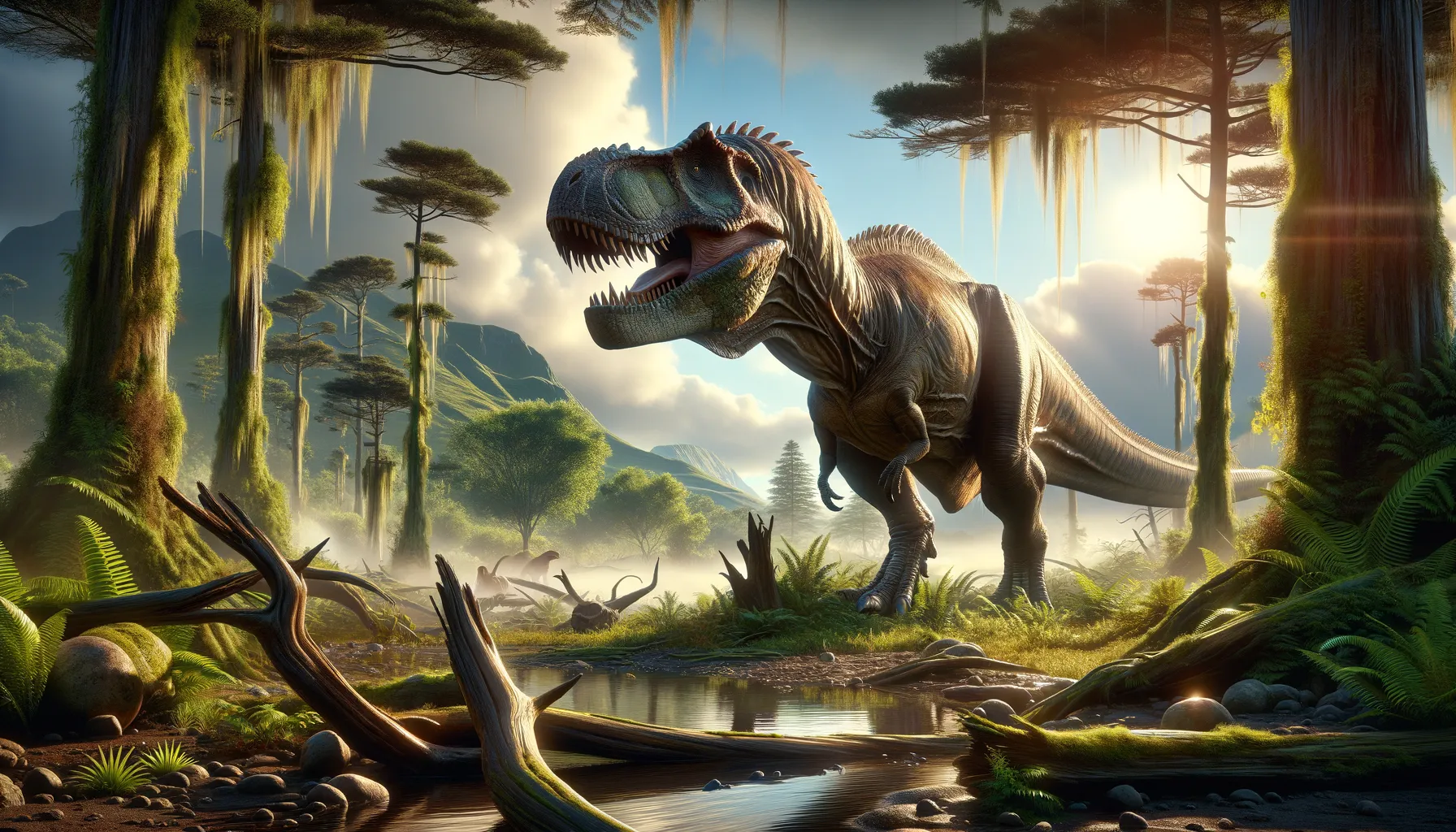
Jenghizkhan
A giant menace of ancient Mongolia.
Period
Cretaceous
Length
Estimated at 12 meters from head to tail.
Height
Around 3.5 meters at the shoulder.
Weight
Approximately 8.5 to 10 tons.
Jenghizkhan was a formidable predator of the late Cretaceous period, thriving in what is now known as Mongolia. This massive dinosaur was part of the tyrannosaur family and shared many characteristics with the famous Tyrannosaurus rex. With a powerful build, it dominated the prehistoric landscape, leaving a lasting impression on paleontologists who continue to study its fossil evidence.
Diet
Jenghizkhan was a carnivore, primarily feeding on large herbivorous dinosaurs. Its diet likely included nearly any animal within its reach, given its size and strength.
Hunting
Jenghizkhan used its powerful jaws and sharp teeth to hunt and overpower its prey. Its hunting style was likely ambush-oriented, using its physical strength to quickly immobilize its targets.
Environmental challenges
The Cretaceous period presented various environmental challenges, including changing climates and evolving ecosystems. Jenghizkhan had to adapt to competition from other large predators and the availability of prey. Natural disasters such as volcanic eruptions or significant climate shifts could drastically alter its habitat.
Speed
Moderate, comparable to modern-day large mammals.
Lifespan
Estimated to live several decades.
First discovery
Discovered in Mongolia in the late 20th century.
Fun Facts
- Jenghizkhan is named after the famous Mongolian ruler Genghis Khan, reflecting its powerful and dominant nature.
- This dinosaur belongs to the Tyrannosauridae family, similar to the well-known Tyrannosaurus rex.
- Jenghizkhan lived during the Late Cretaceous period, approximately 70 million years ago.
- It roamed the areas that are now parts of what we call Asia today.
- Jenghizkhan was a carnivore, likely at the top of its food chain, hunting other dinosaurs.
- Fossils of Jenghizkhan have helped scientists understand more about the diversity of tyrannosaurid species.
- This dinosaur is known for its massive size and strength, with powerful jaws and keen senses.
Growth and Development
Jenghizkhan had a rapid growth rate during its juvenile stages, similar to other tyrannosaurs, reaching near adult size in just over a decade. Its development included significant changes in proportions, with the head and jaws becoming more robust over time. Growth rate would vary based on environmental conditions and resource availability.
Habitat
Primarily inhabited forested floodplains and semi-arid environments. These areas provided abundant prey and water sources, critical for its survival as a large predator. Seasonal changes in its habitat required adaptability in hunting behavior and movement.
Interaction with other species
Jenghizkhan likely had limited interaction with other species apart from being a top predator. Its presence impacted local ecosystems, with its hunting influencing the population dynamics of herbivorous dinosaurs. It may have also had occasional confrontations with other large predators over territory or food.
Natural lifespan
Jenghizkhan often lived up to 30 years in the wild.
Reproduction
Reproduction involved laying eggs, with nesting sites strategically placed in protected locations. Parental care likely involved guarding eggs to ensure a higher survival rate for the offspring. Young Jenghizkhan may have been dependent on adult members for protection and learning essential survival skills in their early years.
Social behaviour
Although primarily solitary, Jenghizkhan might have exhibited social behaviors during certain periods, like mating seasons or when nurturing young. Occasionally, individuals could come together in loose groups in abundant prey areas, but significant social structures were uncommon. Communication likely involved vocalizations and physical displays to assert dominance or attract mates.
Fossil locations
Fossils of Jenghizkhan have been primarily found in the Nemegt Basin of Mongolia. These fossil-rich sites provide valuable insights into the diverse dinosaur fauna of the Late Cretaceous period. Ongoing excavations in this region may yet reveal more about the ecology and distribution of this impressive dinosaur.
